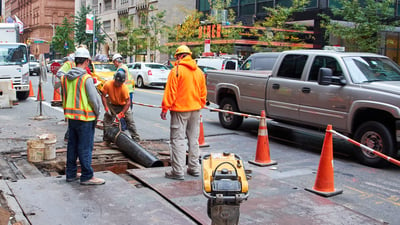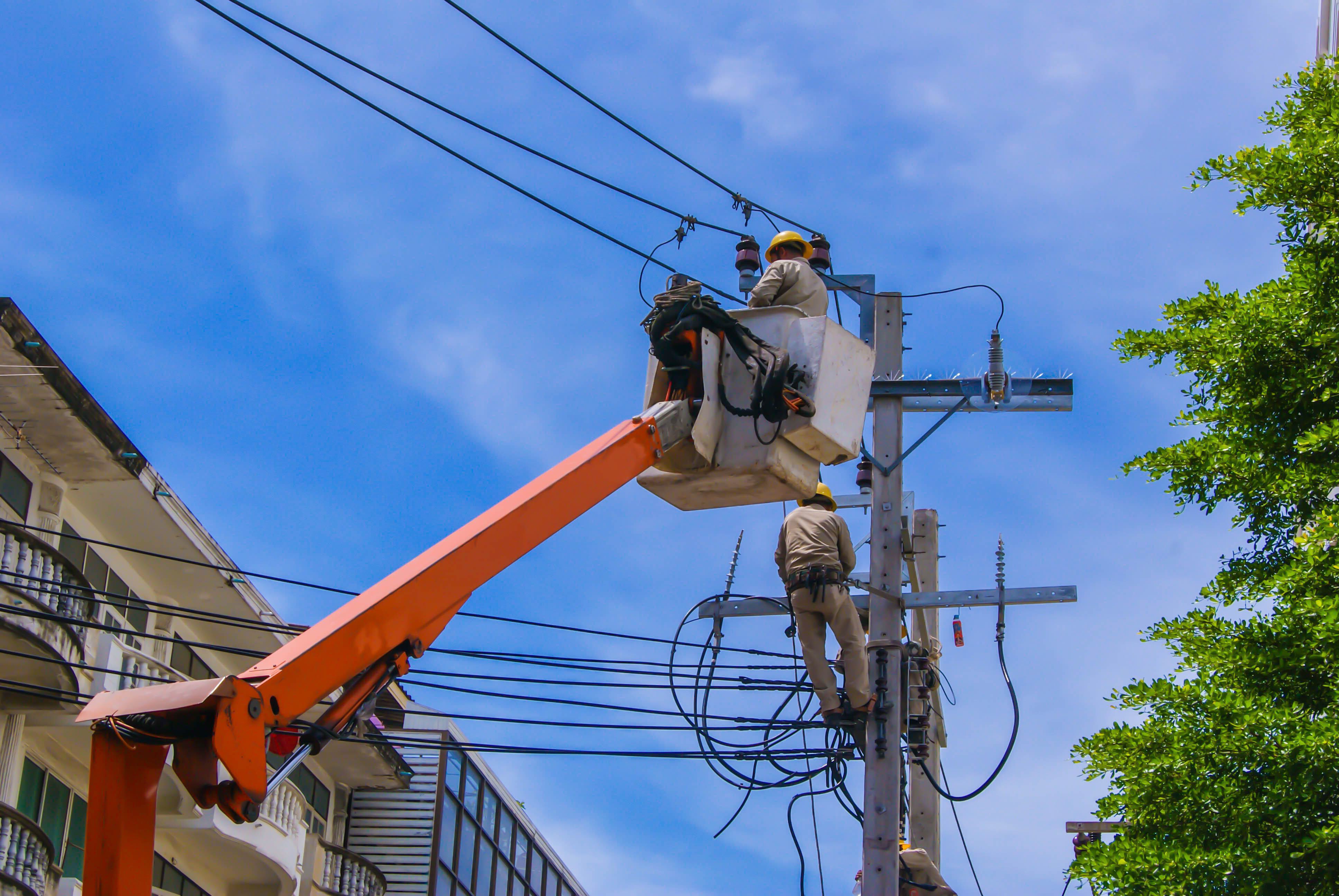One of the most effective tools for improving utility safety is among the most overlooked — the job safety briefing. These routine conversations are so effective, the Construction Safety Research Alliance (CSRA) has identified their absence as one of three precursors of serious injuries and fatalities (SIFs) on job sites.
All utility field crews should conduct job safety briefings. But not every briefing is created equal.
- Why are some job safety briefings effective, while others overlook crucial details?
- What tools and processes can utilities leverage to make these briefings more effective?
- How can field crews hold conversations that identify more hazards and put more controls in place?
All these topics and more are covered in Urbint’s webinar, Life-Saving Job Briefings: How Work Safety Plans Can Eliminate Serious Injuries and Fatalities. In this session, three industry veterans detail their experience making job safety briefings more effective:
- Mike McCallan, former head of electric operations at National Grid;
- Kate Nichols, corporate health, safety, and industrial hygiene manager at Georgia Power; and
- James Upton, director of safety operations at Urbint and former vice-chair of SIF research at the CSRA.
Here’s a rundown of the webinar, including our panelists’ best practices, lessons learned, and tips for making the most of this everyday process.
1. Understand the ‘why?’
Job briefings save lives. But too often, they’re treated as another form to fill out or another box to check.
“There were a lot of checkboxes…,” says McCallan of his 38 years in the industry. “A lot of times, I think our workers didn’t really understand the real value and the ‘why?’ behind them.”
When he noticed some persistent safety issues during his time at National Grid, McCallan conducted an analysis of SIF data that spanned a 10-year period. Through this analysis, he found that 50% of safety incidents had a deficiency in the job briefing. In each case, the job briefing wasn’t written down, it wasn’t discussed, or neither happened.
“That’s a problem,” he says. “If we didn’t identify the hazard or didn’t have a conversation around that hazard, what were the controls?”
Once he discovered the issue, he got safety advocates from across the organization to look at the job briefings. The results were overwhelming.
“The team said, ‘Yeah, we have a problem … They found in their surveys that [only] 30% of the job-specific hazards were identified.”
From that initial analysis, McCallan was able to implement new job safety briefing processes that detailed critical tasks and got more workers involved in the conversation.
“[National Grid’s] safety roadmap that we did four years ago — it hasn’t changed. … The number one thing that we talk about is explaining the ‘why?.’ If you start everything you do with the ‘why?,’ it makes it so much easier.”
Nichols’ agrees. In her time at Georgia Power, she has found that the most effective job safety briefings explain why something is a hazard and why it needs a control.
“Those conversations are great when someone says ‘because,’” she says. “We do this ‘because’ of that. … Then everyone on the crew is on the same page.”
2. Work planning is a safety control
While job safety briefings are effective tools for safety, they also offer an opportunity for field crews to reassess work routines and consider the full range of safety tools in their toolbox.
“Something that I think gets overlooked a lot as a control is work planning,” says Upton. He points out that careful work planning can often eliminate or substitute hazards on site, the two preferred options on the National Institute of Occupational Safety and Health’s (NIOSH) hierarchy of controls.
McCallan and Nichols note that field crews fall into patterns of behavior over time, but job safety briefings empower them to consider their activities with fresh eyes.

“Think differently,” says Nichols. “Place your vehicle as a barrier. If you’ve got a pickup on site, park it across the lane.”
McCallan notes how safety improves with just a little extra work planning.
“Over the years, I saw good supervisors that would not just give the work out, but would go ahead and look at the job ahead of time and say, ‘You know what? Let's position our trucks in that parking lot,” he says. “I'm going to get permission from the owner to do our work there so we're not in the roadway, we're not exposed to the traffic. Planning is a big part — time of day, location of equipment, all of those play into it.”
3. Discussion is the secret ingredient
Written job safety briefings have proven critical to safety at both National Grid and Georgia Power. But both McCallan and Nichols stress the importance of conversation in the briefing process.
“At some point, we made a transition to a [job safety briefing] being a piece of paper,” says Nichols. “[But] it's really around the conversation that goes with that piece of paper and the individuals that are having those conversations.”
McCallan agrees. “To me, it's around the communication, conversation,” he says. “It's the engagement of everybody on the team. It's not a monologue, it's a dialogue.”
New hires with little experience may not recognize common hazards on utility job sites. Likewise, veteran workers tend to normalize the risk of hazards over time. Both groups can advance safety by sharing their knowledge and observations with each other.
“If we put [safety guidelines] out there where they can get them and have a conversation in the field about them, then that makes everybody's life easier,” says Nichols. “They're not presenters, they're not trainers — they're linemen, and they like construction work. They would prefer to be behind the belt than behind the desk.”
4. Tell a story that heightens emotions
Through his work with the CSRA, Upton collaborates on emerging research in construction and utility safety. He notes that new research has shown the unique value of storytelling in making the safety message hit home.
“If you can pull in some kind of emotional connection to the task that you're doing, then your hazard prediction rates are higher in the future,” says Upton.
“So, one of the things that we’re trying to do with [Georgia Power] is tie past incidents to tasks. That way, when you’re having these discussions out in the field, you can have a discussion that says, ‘Hey, we’re doing this critical activity. Here are some things that happened in the past that you can relate to,’ which builds that psychological connection. Now your risk perception in the future is a bit different.”
McCallan has found storytelling effective for safety as well. “That’s how we all learn, right? We learn from past mistakes, we learn from successes. … Having somebody share that story of when it happened to them — it's a new hazard, and those are all valuable in communication, but they’re also valuable in how you identify those hazards.”
5. Center job briefings on hazardous energy
Energy-based hazard recognition is transforming utility safety. Every day, more companies understand that energy causes injuries (and high energy — over 1,500 joules — causes serious ones). In turn, the most effective job safety briefings are the ones that focus on the STKY — the stuff that kills you.
.png?width=400&height=393&name=Energy%20Wheel%20(Color).png)
“The big shift for us was when we went to a critical risk management process,” says Nichols. “So, Southern Company has ten critical risks — here are the ten things that are really going to hurt you or kill you on a job site, and here are the controls that go with them.
“That makes sure that [the workers] have conversations around those things, so it’s not a superficial conversation. These are the things that matter.”
National Grid has also oriented its safety programs around high energy in recent years.
“We began with the high-energy icons,” says McCallan, referring to 13 high-energy hazards identified as part of the Edison Electric Institute’s Safety Classification and Learning model. “They’re just a great reminder, because we’re not all perfect, right? We're all human beings.
“When we see the high-energy hazard icons or categories, it’s a good reminder for us to recognize things that sometimes we just normalize, right? We accept that it's a risk that we normalize. We don't even see it anymore.”
6. Technology supports workers through job safety briefings
“If you ask a typical supervisor what keeps you in the office, it’s paperwork, paperwork, paperwork…,” says McCallan. “They're not out in the field and seeing what's happening, and having those coaching moments, and really making sure that things are being done safely and productively.
“Using a digital process allows them to have more of those conversations now than they had before.”
Georgia Power is ahead of many others in the industry, as the company is already leveraging technology for its job safety briefings.
“I’m really excited about our electronic job safety briefing,” says Nichols. “The feed will come from our work management system with a list of tasks into that app for the crew to look at, and it’ll be designated high, medium, or low risk. …
“Things that [workers] might have overlooked or just not had a good conversation about — anything you can do on that app to really highlight, ‘Here’s what you need to talk about.’”
Nichols points out that turnover in recent years has driven the need for technology. New hires into the industry are often inexperienced with leading job safety briefings, and technology offers a way to make them more consistent and effective.
“You might have a crew leader that's in a position where he has all new employees, and he may have been in his position in the union a year or two. So he's not used to leading those conversations in that way, where he's training young employees. He's used to being the trainee, where he's got people on his crew that have been there for years and have lots of knowledge and they can tell him all those things off the top of their head.
“But with the app, there'll be things in there that that person can pull from — either some short videos, some lessons learned from another job site incident we've had, that kind of thing to help trigger him to cover in the conversation.”
***
Job safety briefings are an essential tool for protecting utility workers, but safety culture is at the root of any good safety program. McCallan, Nichols, and Upton all emphasize the importance of integrating safety throughout a company and its job activities.
“Start your day that way, start your job that way — your safety, risk assessment, and job briefing are part of the work,” says McCallan.
Ultimately, job safety briefings don’t serve as a separate task. Good ones stand as a way that a company’s safety culture shows itself.
“When safety is part of the business, you've won,” says Nichols.
Looking for more information about how to make job safety briefings effective? Watch the recording of Life-Saving Job Briefings or speak to us to learn more.

